Experience the Heart of East Berlin: Architecture and Daily Life Tour
Imagine walking along a street that’s been through the wars, ideological battles, and reunification—Karl-Marx-Allee. This 2-hour tour, priced at just $28.81 per person, takes you through the core of East Berlin, visiting iconic spots like Frankfurter Tor, Laubenganghäuser, and Strausberger Platz. Led by passionate guides whose expertise shines through, you’ll uncover how socialist ideals shaped the architecture and daily life of East Berliners, from the 1950s to today.
What we especially love about this experience is the way it combines architecture with history, showing how buildings and streets tell stories of political ambitions, social upheavals, and personal dreams. Another highlight is how the tour connects the past with the present, revealing how these spaces have evolved over the decades—including the fall of the Wall and ongoing stories of residents.
A small consideration might be that this tour is best suited for those genuinely interested in history and architecture, as it involves a fair amount of storytelling and context. It’s also a walking tour, so comfortable shoes are a must.
This experience is perfect for history buffs, architecture enthusiasts, or anyone curious about Berlin’s complex past and vibrant present. If you’re looking for depth, authenticity, and a guide with real knowledge, this tour will not disappoint.
Key Points
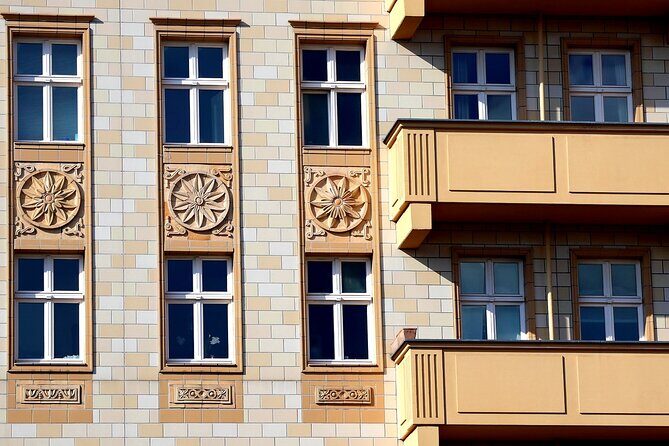
- Authentic Insights: Guides are praised for their knowledge, passion, and personal experience, making the history come alive.
- Architectural Focus: You’ll see iconic socialist buildings and learn about their design, purpose, and impact.
- Historical Context: The tour covers events like the 1953 uprising and how political ideologies influenced everyday life.
- Engaging Storytelling: Expect vivid stories and anecdotes that connect buildings to broader political and social themes.
- Small Group Experience: Limited to 15 travelers, ensuring a personal, interactive atmosphere.
- Value for Money: At around $28, this tour offers a detailed, authentic look into East Berlin’s history, far beyond typical sightseeing.
Exploring East Berlin’s Architectural and Social Fabric
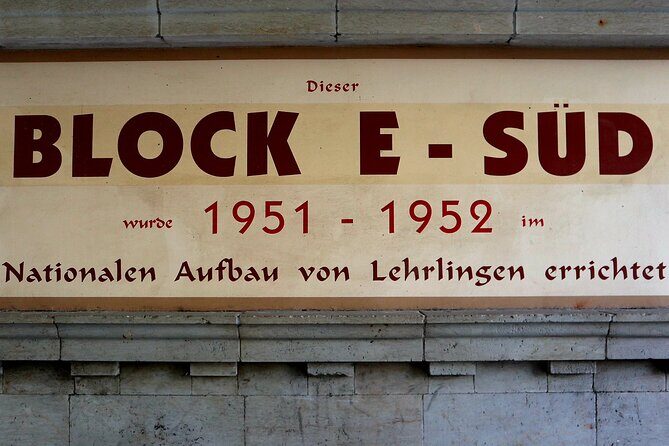
This tour offers a wonderfully layered look at East Berlin through its architecture, history, and personal stories. It’s much more than a walk past pretty buildings; it’s a narrative about a city and a society defined by post-war rebuilding, ideological ambition, and resilience.
Planning more time in Berlin? We've covered other experiences worth considering.
Starting at Frankfurter Tor
Your journey begins at Frankfurter Tor, a landmark that symbolizes socialist grandeur. Here, the tour guides you to the symmetrical towers designed by Herman Henselmann, which represent the ambitions of East Germany’s first socialist street project. We loved how the guide explained the early 1950s plans, highlighting how thousands of volunteers contributed to the national rebuilding effort. It’s a vivid reminder of how architecture can serve as propaganda—celebrating socialist success.
Reviewers have noted that Martina, the guide, combines deep historical insight with humor, making complex topics accessible. The story of this boulevard’s construction reflects both pride and the realities of a post-war society eager to showcase its new identity.
Post-WWII Modernist Architecture at Laubenganghäuser
Next, the tour visits Laubenganghäuser, post-WWII modernist apartments by Hans Scharoun. These buildings embody an idealistic vision of urban utopia—thoughtfully designed, functional, and community-minded. We found this stop especially enlightening because it shows how the ashes of destruction gave rise to new ideas about living and community.
Scharoun’s ideas were ultimately rejected by the East German regime, which preferred a more uniform, monumental style for socialist architecture. The guide’s explanations reveal how political shifts influenced urban planning, making this stop a fascinating case of architecture as a reflection of ideology.
Hochhaus an der Weberwiese: Luxury and Propaganda
The Hochhaus an der Weberwiese is a highlight—an early prototype for the grand Karl-Marx-Allee. Its tenants enjoyed unprecedented luxury, a symbol of socialist progress. However, this building was also a propaganda tool, meant to demonstrate the socialist state’s capability to provide for its people. The building attracted Western architects, and we loved hearing stories about how it became a magnet for new ideas.
The 1953 Uprising and the Memorial at Gedenkstätte
Moving to Gedenkstätte Arbeiteraufstand 17 Juni 1953, we stand at the site of a pivotal moment in East German history. When workers rebelled against government policies, it nearly toppled the regime—an event still deeply etched into collective memory. The monument here is controversial but essential, reminding us that beneath the monumental facades, political tensions ran high.
Reviews praise guides like Martina for contextualizing such events, making them personal and gripping. It’s a powerful moment that underscores the importance of this site in understanding East Berlin’s social fabric.
Café Sibylle and the Stalin Statue Connection
A more light-hearted but historically rich stop is Café Sibylle, once the most exclusive café on Karl-Marx-Allee. The guide explains its ties to the nearby Stalin statue, which stood until 1961, reflecting shifting Soviet influences and local tastes. Today, the café remains a reminder of East Berlin’s glamorous side, even during austerity.
Bust of Karl Marx and Daily Life Stories
The Karl-Marx bust spot offers insights into how socialist ideology permeated everyday life. The guide shares stories about how residents experienced life under socialism, what they aspired to, and how political ideals shaped their routines.
Post-Reunification Changes at Strausberger Platz
Finally, we arrive at Strausberger Platz, an impressive example of Henselmann’s style. The tour discusses how the street evolved after the Wall fell, highlighting ongoing debates about preservation and renewal. Stories from locals reveal both nostalgia and change—some buildings have been restored, others replaced.
The Value of This Tour
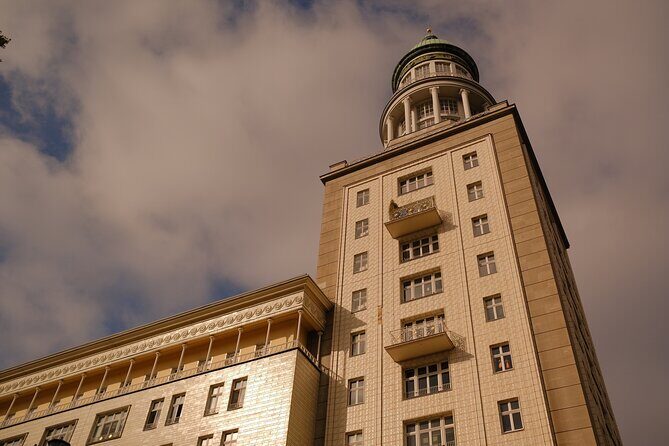
What makes this tour stand out is the expert guides’ knowledge and their ability to weave architecture with personal stories and political history. According to reviews, guides like Martina and Luis make complex history engaging, often sharing anecdotes that stick with you long after the tour ends. The small group size ensures personalized attention and room for questions, making it a comfortable learning environment.
The price, at less than $29, offers tremendous value considering the depth of insight and the quality of the stories told. Instead of just viewing buildings, you walk away understanding why they look the way they do, and what they meant to the people who built and inhabited them.
This experience is ideal for travelers who crave more than surface-level sightseeing, especially those interested in architecture, political history, or urban development. It’s also perfect if you enjoy stories that connect past and present, revealing how East Berliners navigated their environment through decades of change.
The Sum Up
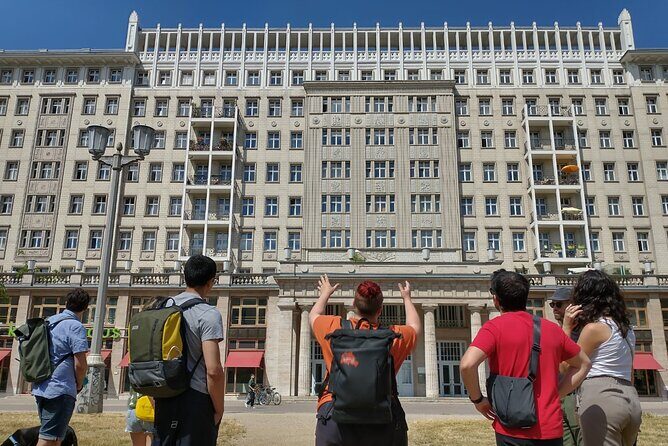
This East Berlin tour skillfully combines history, architecture, and social stories to give a comprehensive picture of a city shaped by ideology and resilience. The knowledgeable guides and thoughtfully chosen stops make it a worthwhile experience for history lovers and architecture fans alike. At a reasonable price, you get a detailed, authentic account that enhances your understanding of Berlin’s divided past and its ongoing evolution.
Whether you’re a first-time visitor or a repeat visitor eager for a deeper dive, this walk offers fresh perspectives and memorable stories. It’s a chance to see East Berlin not just through its buildings, but through the lives that filled them with meaning.
If you’re interested in uncovering how political ideals influence urban landscapes and everyday life, this tour is a perfect fit. It’s also ideal for those who appreciate well-researched guides who bring history alive with humor and authenticity.
FAQs
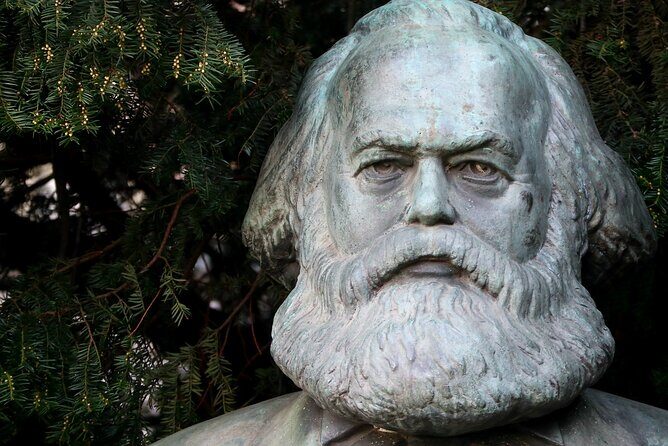
How long does the tour last?
It lasts approximately 2 hours, making it a manageable yet in-depth experience.
Where does the tour start and end?
It begins at U Frankfurter Tor and ends at Strausberger Platz, both easily accessible by public transport.
Is the tour suitable for all ages?
Most travelers can participate, but since it involves walking and historical stories, younger children might find it less engaging.
What is the price of the tour?
It costs around $28.81 per person, offering good value given the detailed insights and small group size.
Are tickets available online?
Yes, it’s a mobile ticket, and booking confirmation is received immediately.
Can I cancel if I change my plans?
Yes, free cancellation is available up to 24 hours in advance for a full refund.
Is the tour accessible for those with service animals?
Yes, service animals are allowed.
Does the tour go into the buildings?
No, it’s a walking tour that focuses on exterior architecture, historical sites, and stories behind them.
In summary, this East Berlin architecture and life tour delivers a well-rounded, engaging experience for those eager to understand what life was like behind the socialist facades and how those spaces continue to tell stories today. It’s a rare chance to see a city through the eyes of those who lived and worked there, guided by passionate storytellers who know their stuff.
More Tours in Berlin
- Private Walking Tour: World War 2 and Cold War Sites in Berlin
- Private City Kickstart Tour: Berlin
- Group Driving Tour 1 to 6 people. Berlin Shore Excursion incl pick-up at Port
- 3-Hour Bike Tour of Tiergarten and Berlin’s Hidden Places
- Berlin Vegan Food & Cultural Walking Tour in Vibrant District
- Berlin: Private Bike Tour of the Berlin Wall and Third Reich
More Tour Reviews in Berlin
More Berlin experiences we've covered
- Private Walking Tour: World War 2 and Cold War Sites in Berlin
- Private One way Airport Transfer Berlin Airport To Berlin
- Private City Kickstart Tour: Berlin
- Group Driving Tour 1 to 6 people. Berlin Shore Excursion incl pick-up at Port
- 3-Hour Bike Tour of Tiergarten and Berlin’s Hidden Places
- Berlin Vegan Food & Cultural Walking Tour in Vibrant District
- Berlin: Private Bike Tour of the Berlin Wall and Third Reich
- Berlin 4-Course Sunset Dinner Cruise Including Drinks
- Private Tour: Potsdam Day Trip from Berlin
- Berlin: Sachsenhausen Concentration Camp Memorial Tour
- Sachsenhausen Memorial Private Half Day Tour
- Berlin Walking Tour with Audioguide on Your Smartphone
